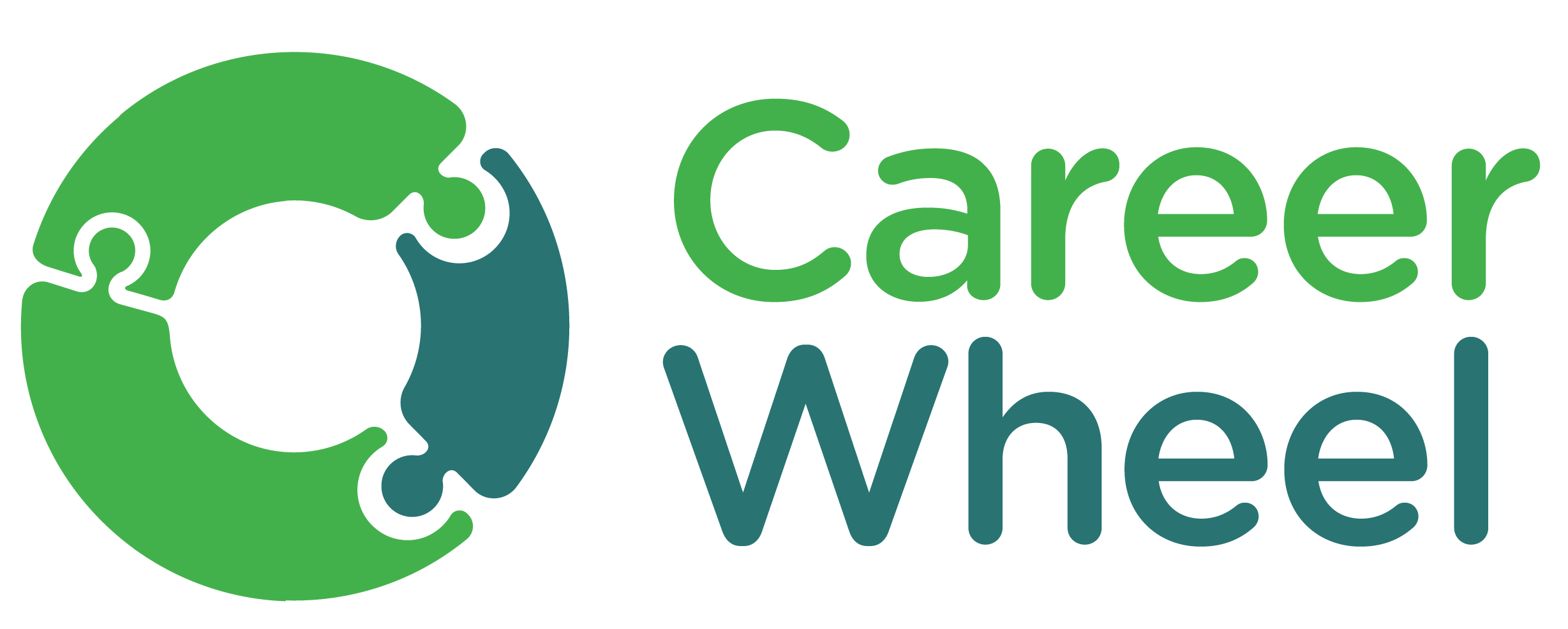“I tender my application for jobs, but I never land interviews”
Do you often find yourself in this situation? I understand that it can be frustrating. The baseline is that your résumé is not in the language that recruiters/employers understand.
Your résumé fails to take you to the next stage because it may have an issue with at least one of these factors; Content, Context and Structure (CCS). In this article, I will assist you with different strategies to optimize these factors to your advantage. You deserve an interview.
CONTENT
Your résumé is a branding tool. It is meant to put you in the spotlight in professional and even personal relationships. It must contain the right content that positions you as a valuable person to recruiters, employers and your networks. Listing roles and responsibilities on the résumé labels you as average; although in reality, you may be a top performer. Think about this: If a recruiter is recruiting for a banker role, they will publish a job description for the role. (Personally, I am not happy with recruiters that do not include a standard job description in job postings; that is a topic for another day). The job description will usually contain your roles and responsibilities, and this means that the recruiter is very much aware of what you do in your role. Even if they are not, it’s just a google click away. It is therefore important to highlight the impact and positive change you have led in organizations you have worked with, while you define your activity. You may include a brief summary of your roles and responsibilities, in a single line, before highlighting your impact. One big step to take at this stage is to make good use of numbers; absolute numbers or percentages. Percentages help to compare 2 situations; your performance to a past performance or your performance against a target. See numbers in the résumé as colour in a picture. It makes your content as objective as possible and paints a definite picture for the recruiter or employer.
“I drive very fast”
“I drive at 200 kmph”
Right there! Do you spot the difference? At best, keep your bulleted content at a single line. In the worst case, two lines. It is really a matter of summary, analysis and math. Now follow this process to develop the right content.
Define your capacity: Go through the tasks you execute every day and attach numbers to all of them. E.g. If you engage with customers everyday over the phone, how many phone calls do you answer every day? If you lead a team on a project, how many people are on the team and what is the value of the project? Defining your capacity is just the first step in communicating your value. Is it enough? Definitely not.
Results of your action: What were the final results of your actions? You can group them into one of 4 main categories (I call them the Big 4);
- How much increase did you cause in revenue? – Skyrocketed sales by 400% in 2020 Q1; 100% above target.
- How much time and resources did you save? – Automated filing system resulting in 50% reduction in man hours associated with document retrieval.
- How much did you decrease in losses/expenditure? – Slashed projected expenditure by 50% by enrolling 10 new vendors with a price advantage.
- To what degree have you reduced risk for the company? – Nullified risk of stock expiration and imbalances by instituting monthly stock taking.
This is the language that every employer understands because it rings the value bell to them, and they expect to see that on your résumé.
Pro-Big 4 results: While the big 4 stay as your very strong unique selling points, these other results also play a major role in contributing to the big 4 for organizational success. For example, increasing customer retention will definitely lead to either an increase in revenue or reduce the risk of losses. Also, outside profit-focused organizations, you will want to define what success means and measure your success. E.g. In a Senior High School setting, measure of success and value of a teacher could be the average score of their students in their end of term examinations and attrition rate/truancy/absenteeism at the class level. A headteacher’s metrics could be on these same factors but at the school level and additionally, consider factors like the number of students who enrol at the next level of education etc.
Always peruse your content and have an analytical person/people review it for you. You don’t want to have typographical errors on your résumé. The best part of having the right content on your résumé is that it also serves as content for your interviews and it plays a significant role in communicating your value while networking. Three birds hit with one stone. BINGO!
CONTEXT
“Content is king, but Context is god” – Gary Vaynerchuk
If you have an interesting product that is not tailored to the needs of your customers, it won’t sell, and that amazing product is bound to fail. In this case, you are the product. Your content has to be put in perspective for your audience; the recruiter, employer or your networks. This is why the “SPRAY AND PRAY” is not recommended. “SPRAY AND PRAY” means distributing one résumé all around without contextualizing and tailoring it to suit specifications in the job description and hoping that you will be called for an interview. You must always tailor your résumé to the needs of the employer. Identify keywords in the job description, requirements and qualifications and mirror them in your résumé. For example, if a customer service role requires that you have excellent conflict resolution, communication and negotiation skills, you need to make sure that you have “conflict resolution”, “communication” and “negotiation” in your résumé. This does not also mean that if you do not have a skill, you must list it on your résumé just because it’s a keyword listed in the job advertisement. Integrity is everything. You could actually make use of online résumé scanners to check how tailored your résumé is to the chosen job description. With the right content in the right context, you stand a better chance of landing an interview.
STRUCTURE
Now that you have the right content and context, the final aspect of the résumé is the flow of information. Consistency is of utmost importance here and it provides clarity to your document. Consistency starts from well-defined sections, good grammar and punctuation, bulleting, text alignment, uniform text capitalization where necessary and font type (Calibri, Trebuchet, Helvetica etc), colour (normally black) and size (not less than 11). The standard structure for all chronological résumés must include the following sections;
Name and Contact Information: Avoid writing “Curriculum Vitae” on your résumé. The recruiter already knows what the document is about. Rather, have your name as the first thing that appears followed by contact details. This includes a postal code/location, an active phone number and a professional email address; for example, Mr. Kofi Folsom’s email address could look like kofi.folsom@gmail.com, a professional one, rather than kofmygee34@gmail.com.
Professional summary: This is your elevator pitch. It reflects your qualification(s), key strengths and skills, a top achievement and the value you are bringing to the table.
Education: A record of your educational history/qualifications. Lowest level of education could be high school if you are a fresh university graduate. In some cases, it is not important unless it is going to give you some form of advantage. For example, if you completed the same high school as the recruiter, then it gives you some leverage. If you have postgraduate degrees, your undergraduate degree should be the lowest level of education document. It is not advisable to list any educational qualifications prior to your high school education.
Skills and Competencies: The skills and expertise you have that are related to the job you’re applying for. You could segregate it into technical skills, soft skills and software/technology skills. You can list languages that you can communicate in here.
Work Experience: A record of your current and previous job roles. For this section, you indicate your job title, company name and its location and the period of work; it is advisable to show the month and the year of commencement to that of termination. Below this, you list your quantifiable responsibilities and/or the impact you led in the organization (This is where your content comes in). Your work experience should be listed in reverse chronological order; list your most recent job experience first and then down to the earliest. You may want to eliminate jobs that you worked on more than 10 years ago. However, if it is important to list these jobs for some particular reason, then you could list only the job title, company name and its location and the period of work.
Other sections that could be added include Licenses and Certifications, Not-for-profit/Voluntary work, Leadership Roles and Referees (when requested, otherwise it just consumes space). It is always better to keep an ATS compliant résumé structure. This is normally devoid of pictures, tables, icons, graphics; basically, keep it simple and sweet. For students and recent graduates, you may want to maintain the structure stated above with any of the additional sections if applicable. For experienced workers, you may want to push the education section to the terminal portion of the document so that your strengths are well highlighted on the first page. In all cases, avoid personal information like age/date of birth, religion, gender etc. on the résumé unless specified. Do not set yourself up for unnecessary bias that will contribute to losing an interview slot. Keep your résumé at 2 to 3 pages unless otherwise specified by the recruiter or employer. Please note that the structure indicated above is the chronological résumé format, which is the most common résumé format. The other types are the functional and hybrid formats.
Before you draft you next résumé, score yourself on content, context and structure. If you are good to go, your chances of landing an interview is high. If not, you can talk to me here: productivityoptimizer@gmail.com. You deserve that job! Stay Safe and Stay Home.
Monthly tip: It is always better to build a general résumé that encompasses everything that you have done in your professional life. Whenever you are ready to apply for a job, you can sort out the right content and contextualize it to suit the job requirements.
PS. You could fill out this form to get a free résumé template: https://bit.ly/2Mma9WB
If you found this insightful, connect with us on Twitter, Instagram and Facebook: @productivityopt. We are happy to help.
My name is Joel Kojo Abaka Anaman. A Pharmacist by Profession, a Salesman by Occupation, a Career Coach by Passion and a Techpreneur by Vision. It is also my vision to reach 1 million students, new graduates and young people in active jobs with this initiative. Join me in this journey as we debunk some myths and activate some life hacks to propel us towards our career goals. Guess what?! This is not reserved for 9-5 workers; Entrepreneurs will also benefit massively from this.





